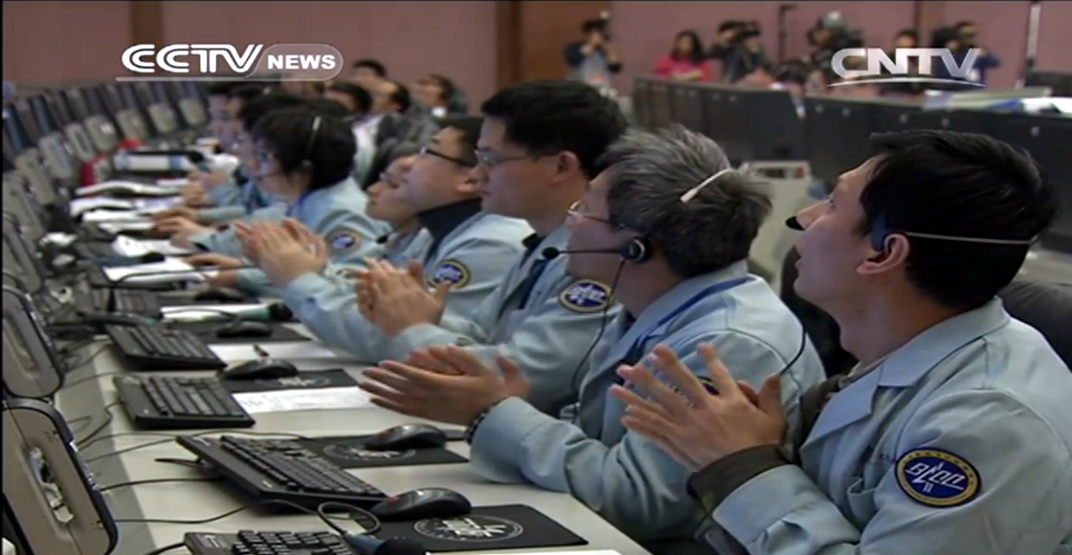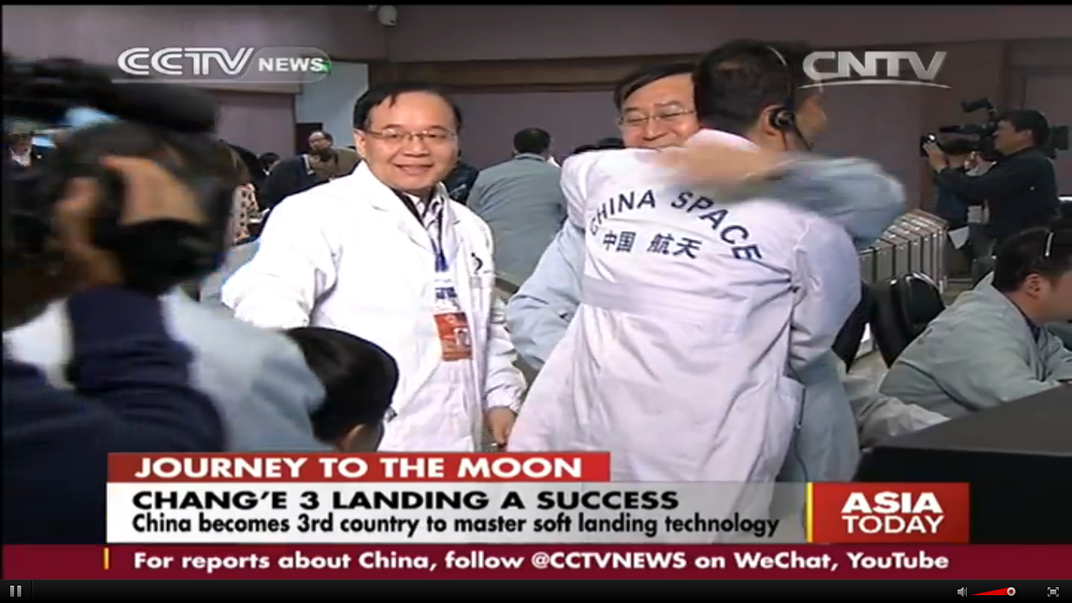Chang’e-3 On The Moon
China’s first landing on another world
February 13 update: After nearly three weeks of silence, a spokesman for China's lunar program was quoted by the Xinhua state news agency saying that the Yutu rover is still alive. No word, though, on whether it can return to normal functioning on the moon's surface. The spokesman, Pei Zhaoyu, said only that "The rover stands a chance of being saved now that it is still alive."
February 5 update: The press and social media may have counted the Yutu rover out already, but lacking official reports from the project team, we'll have to wait until Saturday, when the sun rises at the rover's landing site, to learn whether Yutu survived its second two-week lunar night. The issue appears to be whether one of the solar panels folded down properly to protect instruments from the intense cold.
At least the Chinese public is rooting for the rover. The Stewarts -- Jon and Patrick -- tell you everything you need to know in this Daily Show segment from last night:
January 26 update: The Yutu rover appears to have suffered a failure just as it was preparing to enter its second lunar night. Official statements have been vague as to the nature of the problem, leaving Western observers and even Chinese media to speculate (as in this Planetary Society blog) based on brief social media reports.
January 24 update: The Yutu rover and lander are in their second lunar day, having survived the two-week night. That alone fulfills one of the mission's main goals -- to prove that onboard nuclear batteries can keep the machines warm during hibernation.
News reports about the project have been skimpy recently, but images of Earth from the moon and stars in the black lunar sky have been released. The Chinese press also published images taken from the lander before the two-week hibernation, which U.S. space artist Don Davis has turned into this nifty panorama. Click on the image to see it full size.

December 22 update:
The Yutu rover has been busy creating a panoramic photo of its surroundings. Here's an update from CCTV:
December 15 update: The Chang'e-3 lander and Yutu rover spent much of yesterday taking each other's picture on the Moon. China Central TV described the photography sequence.
Meanwhile, CNTV released a more detailed video of the landing taken from a descent camera on Chang'e-3. YouTube user "SpaceOperaFR" has handily turned the frame upside-down so we appear to be looking down at the surface as we descend. The scene ends with the one-ton lander's footpad on the surface.
December 14 update: Chang’e-3 landed safely on the moon this morning at 8:11 U.S. Eastern time, or 9:11 p.m. in Beijing.


Original Post: For the first time in 37 years, a spacecraft is about to land on the moon. If all goes well, China's Chang'e-3 spacecraft will touch down somewhere in the flat lava plain known as Sinus Iridum on Saturday morning. Chinese space officials haven't announced the time of landing, but Chinese news sources put it at 8:40 a.m., U.S. eastern time. [Note: the landing was at 8:11] European tracking stations will be on duty to support the descent to the surface starting two hours before that.
The targeted landing site has not been revealed in advance either, but U.S. scientists have speculated that the spacecraft will come down near a relatively young, five-mile-wide crater called Laplace A. Not since the Soviet Luna 24 in 1976 has a robot touched down softly (as opposed to crashed) on the lunar surface. Chang'e-3 is China's first attempt to land on another planetary body, but is much more than a simple repeat of something NASA did in the 1960s. The lander will deploy a rover named Yutu, which is expected to roam as far as six miles from the landing site. Both the lander and rover are equipped with up-to-date technology, from sensors for automatically detecting hazards during the final descent to a ground-penetrating radar that will let scientists explore 100 meters below the surface. For the Chinese space program, this is a big step: Some 80 percent of the technology is being tested for the first time in space.
At 140 kilograms, Yutu is in the same size and weight class as the Spirit and Opportunity rovers sent to Mars. It's expected to keep working for three months. The lander itself is designed to last a year on the surface, taking pictures, studying the local geology, and even doing a bit of astronomy from the moon (there's a 4-inch ultraviolet telescope onboard). To keep operating during the cold, two-week lunar night, Chang'e-3 carries nuclear batteries similar to those used on NASA planetary spacecraft. Mission scientist Ye Peijian said in a Chinese TV interview that the soft landing and surviving the lunar night are the project's two biggest technical challenges.
In this interview with Chinese TV, Ouyang Ziyuan, head of the country's lunar program, puts the Chang'e-3 landing in the context of past accomplishments and future plans.
This animation shows (starting with the descent about halfway through) what's supposed to happen tomorrow morning. China Central TV will be covering the action live.



